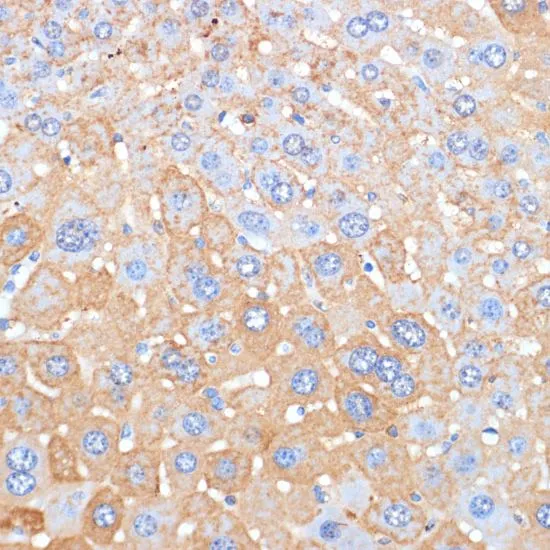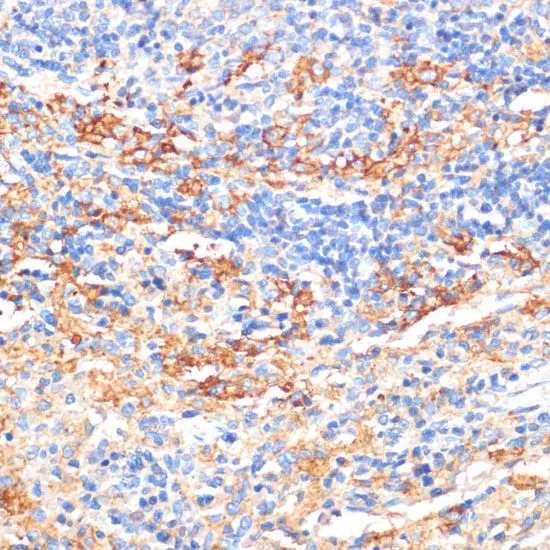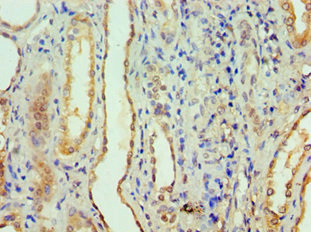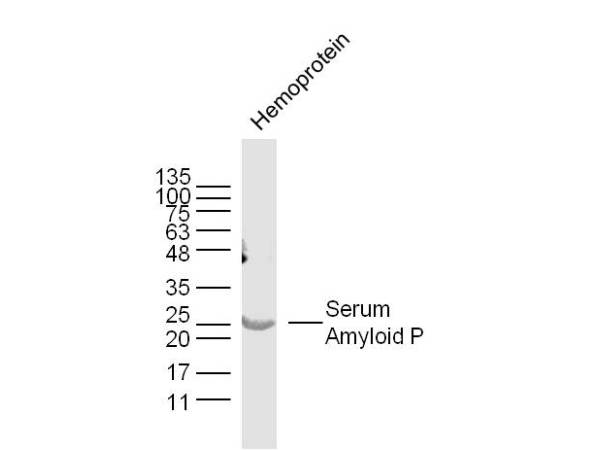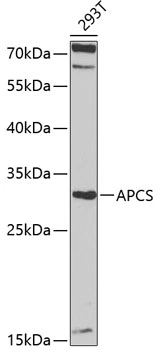
WB analysis of 293T cell lysate using GTX55792 Serum Amyloid P antibody. The signal was developed with ECL plus-Enhanced. Dilution : 1:1000 Loading : 25microg per lane
Serum Amyloid P antibody
GTX55792
ApplicationsWestern Blot, ImmunoHistoChemistry, ImmunoHistoChemistry Paraffin
Product group Antibodies
TargetAPCS
Overview
- SupplierGeneTex
- Product NameSerum Amyloid P antibody
- Delivery Days Customer9
- Application Supplier NoteWB: 1:500 - 1:2000. IHC-P: 1:50 - 1:100. *Optimal dilutions/concentrations should be determined by the researcher.Not tested in other applications.
- ApplicationsWestern Blot, ImmunoHistoChemistry, ImmunoHistoChemistry Paraffin
- CertificationResearch Use Only
- ClonalityPolyclonal
- ConjugateUnconjugated
- Gene ID325
- Target nameAPCS
- Target descriptionamyloid P component, serum
- Target synonymsHEL-S-92n, PTX2, SAP, serum amyloid P-component, 9.5S alpha-1-glycoprotein, epididymis secretory sperm binding protein Li 92n, pentaxin-related, pentraxin-2, pentraxin-related
- HostRabbit
- IsotypeIgG
- Protein IDP02743
- Protein NameSerum amyloid P-component
- Scientific DescriptionThe protein encoded by this gene is a glycoprotein, belonging to the pentraxin family of proteins, which has a characteristic pentameric organization. These family members have considerable sequence homology which is thought to be the result of gene duplication. The binding of the encoded protein to proteins in the pathological amyloid cross-beta fold suggests its possible role as a chaperone. This protein is also thought to control the degradation of chromatin. It has been demonstrated that this protein binds to apoptotic cells at an early stage, which raises the possibility that it is involved in dealing with apoptotic cells in vivo. [provided by RefSeq, Sep 2008]
- Storage Instruction-20°C or -80°C,2°C to 8°C
- UNSPSC12352203
References
- SAP deficiency aggravates periodontitis possibly via C5a-C5aR signaling-mediated defective macrophage phagocytosis of Porphyromonas gingivalis. Wang L et al., 2022 Oct 12, J Adv ResRead more

